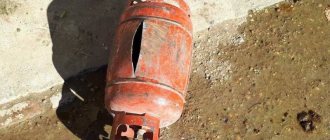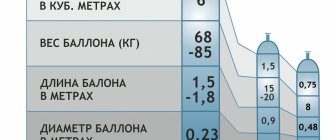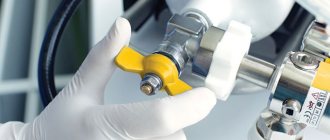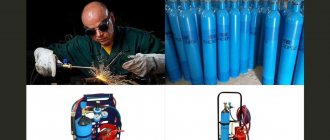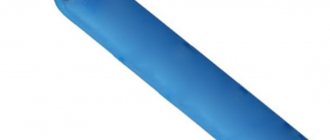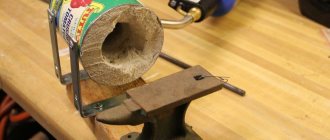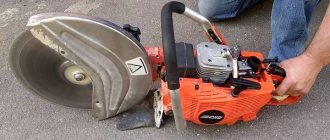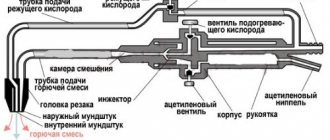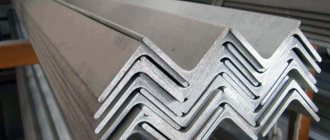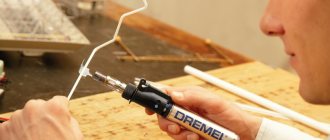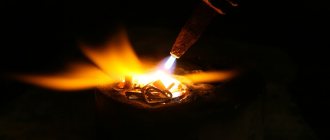Description
These propane cylinders are used for transportation and storage of liquefied hydrocarbon gases. They are made from a range of metals that are resistant to corrosion. The cylinder has the ability to withstand high pressure, but at the same time, during operation, it is necessary to prevent sudden increases in temperature, as this can lead to an increase in pressure.
Cylinders with a volume of 50 liters are equipped with valves VB-2, VK-94 (with subsequent connection to it of a pressure regulator RDSG 1-1, 2) or valve KB-2 (using a pressure regulator RDSG 2-1, 2). During work related to gas-flame processing of materials, welding in shielding gases, and plasma cutting, this propane cylinder is used.
What load can the container withstand?
Standard cylinders can withstand pressures up to 19.6 MPa. In this case, the wall thickness can reach up to 8.9 mm. However, not a single gas distribution or consuming device can withstand such a powerful pressure.
The standard pressure in a 50-liter container is always 1.6 MPa. This pressure indicator is optimal for the operation of all household gearboxes to which stoves, heaters, ovens and boilers are connected.
If you follow simple operating rules, which include vertical storage, installation of vessels in an iron box standing on the north side, as well as distance from wells, windows, doors and the presence of gearboxes, then gas cylinders do not pose any danger to others
Manufacturers of standard containers focus on a pressure of 2.5 MPa, because the vessel must withstand it during inspection, once every five years. If the seams do not hold up, the flask is immediately scrapped.
The locking unit must also withstand a pressure of 2.5 MPa. Although its device allows you to control pressure up to 19.6 units. Cylinders are subjected to this test in exceptional cases; they are usually filled with gas with a pressure of 1.6 MPa.
To avoid problems when working with a cylinder, the following safety measures must be taken into account:
- In the room where the cylinder is used and stored, the air temperature should not exceed 45 °C.
- Filled cylinders are also prohibited from being heated by sunlight or other heat sources.
- Care must be taken to ensure that cylinders are not subject to accidental drops or impacts.
It is necessary to check the gas cylinder for the possibility of gas leakage. If you smell gas in the room, you should immediately stop using the gas cylinder. Next, immediately close the valve on the cylinder and turn off the tap of the gas heater. The next step is to ventilate the room, open a window or door until the smell of gas is completely eliminated; during this time, it is forbidden to light a fire, smoke, or turn on electric lighting in the room.
A 50 liter cylinder is widely used as an excellent fuel for heating. For example, many residents of private homes use propane cylinders to heat residential and commercial buildings. This is due to a number of advantages in use, since propane is economical in price, and you can buy propane cylinders in any locality.
What is domestic gas
Let's remember the basics of school organic chemistry.
The first saturated hydrocarbon is methane. The molecule of this gas consists of one carbon atom surrounded by four hydrogen atoms. If you slightly lengthen the chain - instead of one of the hydrogen atoms, “attach” one carbon, and attach hydrogen atoms to the remaining three of its bonds - you get the next member of the family of saturated hydrocarbons, ethane.
Starting from the beginning of the chain, we have:
- methane CH4;
- ethane C2H6;
- propane C3H8;
- butane C4H10.
The last two compounds - propane and butane - are the contents of household gas cylinders.
A 50 liter propane cylinder has the following technical characteristics.
• working pressure, MPa 1.6; • test pressure, MPa 2.5; • overall dimensions: Shell diameter, mm 292; • height, mm 1015; • wall thickness, mm 3; • material: steel B Art. 3 sp. Empty cylinder weight, kg 19; • mass of liquefied gas, kg 23.
Size chart of composite (lightweight, type 3, CNG-3) gas cylinders for methane (natural gas).
| The cost of cylinders (type 3) including installation* is 550 rubles/liter according to the price list |
CNG-3 methane cylinders, the average coefficient of perfection (mass to volume ratio) = 0.65 , i.e. a 100 liter cylinder will weigh approximately 65 kg.
| Volume, l | Gas capacity, m3 | Outer diameter, mm | Length, mm | Weight, kg | Max. working pressure, MPa | Test pressure, MPa |
| 47 | 11,75 | 326 | 860 | 33,6 | 20 | 30 |
| 50 | 12,5 | 326 | 900 | 35,2 | 20 | 30 |
| 67 | 16,75 | 326 | 1140 | 44,6 | 20 | 30 |
| 80 | 20 | 326 | 1360 | 53,2 | 20 | 30 |
| 100 | 25 | 326 | 1660 | 65 | 20 | 30 |
| 123 | 30,75 | 326 | 2000 | 78,4 | 20 | 30 |
| 67 | 16,75 | 398 | 840 | 45,6 | 20 | 30 |
| 80 | 20 | 398 | 965 | 52,3 | 20 | 30 |
| 85 | 21,25 | 398 | 1015 | 55 | 20 | 30 |
| 96 | 24 | 398 | 1125 | 61,1 | 20 | 30 |
| 100 | 25 | 398 | 1165 | 63,5 | 20 | 30 |
| 132 | 33 | 398 | 1485 | 80,5 | 20 | 30 |
| 160 | 40 | 398 | 1765 | 99,5 | 20 | 30 |
| 185 | 46,25 | 398 | 2005 | 108,5 | 20 | 30 |
Read also: Requirements for power tools
see also
OKP 14 1200
By Decree of the State Committee of Standards of the Council of Ministers of the USSR of December 19, 1973 N 2717, the introduction date was set from 01/01/75.
By Decree of the USSR State Standard dated August 14, 1991 N 1352, the validity period was lifted.
This standard applies to cylinders made of carbon and alloy steel, small volume - up to 12 l and medium volume - from 20 to 50 l with a working pressure of up to 19.6 MPa (200 kgf/cm2), made from seamless pipes and intended for storage and transportation of compressed , liquefied and dissolved gases at temperatures from minus 50 to plus 60°C.
The standard complies with the CMEA standardization recommendation PC 2496-70.
120 Comments “Size Chart of Composite Gas Cylinders (Type 3) for Methane”
Hello. Volkswagen Passat sedan 2008. How much does a cubic methane cylinder fit normally?
Hello! Please call (opening hours Mon-Fri from 8 to 20, Saturday from 10 to 17, lunch from 14 to 15, closed on Sun), specialists will advise you. You can also sign up for a fitting and choose the optimal cylinder volume; there is a large selection available.
How much will it cost to install methane with a H406.089.S3 cylinder on a Peugeot 308 hatchback?
Good afternoon, I have a 1991 Toyota Town ace petrol. I took gasoline specifically for installation under methane. The cylinder itself will be installed on the trunk roof. I want to install a composite cylinder, one long one with a large volume, at the maximum, in the middle. I'll do the mounting for the cylinder myself. Please tell me at least the approximate cost of installing methane equipment. And installation time. I will be grateful.
Hello, Leonid! Regarding the possibility of installing a cylinder on the roof of the trunk, it is better for you to consult with managers. The cost of installing gas gas equipment for methane is from 70,000 rubles, depending on the brand of equipment and the volume/type of cylinder, you can estimate it in the calculator https://elitegas.ru/gbo-price-calculator/ Please call (opening hours from 8 to 20 on Mon- Fri, from 10 to 17 on Sat, closed Sun).
Hello, I want to install methane on a Kia Karens 7 seater, under the bottom for a spare tire. Balcony length 0.60 cm. What do you advise ?
Hello Abdullah! It is not clear what you mean by balcony. We recommend calling, clarifying all the details and making an appointment to try on a cylinder. Please call (opening hours Mon-Fri from 8 to 20, Saturday from 10 to 17, lunch from 14 to 15, closed Sun)
Balcony length 0.60 cm
Don't experiment with high pressure. Life threatening. Moreover, you will not be able to register this with the traffic police. For the first time 500 rubles. On the second – deregistration of the vehicle.
what kind of roof are you talking about Leonid? There is a crazy Pressure of 200 Atmospheres.
in the body or better under the bottom in a niche or instead of a gas tank.
come, let's do everything according to our minds
Hello. I'm interested in installing a methane gas system on a '13 Camry 2.5 liter. Will 3 50 liter cylinders of the third type fit in without interfering with the spare wheel? Cost of work? Main criteria, maximum gas volume with minimal space consumption, optimal price. Thank you.
Hello Dmitry! Whether the cylinders will fit or not depends on the size of the trunk. It would be best for you to call and come to try on the cylinders, where specialists will measure and select cylinders with the optimal volume. The cost of methane plants usually ranges from 75,000-80,000 rubles, depending on the equipment, options and cylinder part. We also recommend that you familiarize yourself with the promotion for installing methane gas equipment, it is possible to receive compensation from Gazprom: https://elitegas.ru/lp-ecocity/ Please call (opening hours from 8 to 20 on Mon-Fri, from 10 to 17 on Sat, Sun closed).
Good afternoon. I have a Volkswagen Multivan T5, and I want to install methane and a couple of cylinders instead of a spare tire under the bottom. Can you carry out such a modification? How is your availability of cylinders? To come and pick up the maximum that will fit. How is a car registered with the traffic police? If I'm not a resident of Yekaterinburg.
Hello, Vladimir! Let's first decide on the possibility of installing a pair of methane cylinders. Gas cylinder 33L (methane) BT-33-20 diameter 254 mm length 882 mm, if they fit under the rear overhang, then installation is possible. Measure the spare tire niche, what are its dimensions?
Read also: Screwdriver torque regulator
Apart from small irregularities, which I assume can be removed, the niche can accommodate 2 cylinders up to 90*25cm (length*diameter). The diameter can be even a little larger if desired. The BT-33-20 cylinder will not work, as I am struggling with excess weight. Types 1 and 2 are heavy, type 4 is a bit expensive, I’m counting on type 3 points. If you try to fit these two Art. H331.049.S3 CNG-3 STAKO cylinder 49 l (331x820 mm), 20.5 kg?
Metal Cylinders and only Metal Cylinders are the Key to Your Safe Operation, and especially multivan, the body allows
Hello, how many bolts can be installed on a gazelle of the 13th year of the 13th local if the number of bolts is allowed
Hello Soltan! There are no restrictions on the maximum number of cylinders. The capacity of cylinders is usually limited by available space, their own weight, funds and common sense. Please call +7 (343) 253-28-88, (opening hours from 10 to 20 on Mon-Fri, from 10 to 17 on Sat, closed on Sun), they will select the right volume for you, it may be better to come for a fitting, make an appointment.
Many motorists and, first of all, taxi owners, in an effort to save money, install methane gas in their cars. Operating a car on natural gas, in some regions of the country, is significantly cheaper than driving on propane. Therefore, today we will talk about what methane cylinders are. Let's look at what dimensions they have, what they are made of, and what pressure they can withstand. And most importantly, what material cylinders are made of are the safest.
Material of manufacture
Propane tanks are made from steel or fiberglass. The first are obtained by welding the bottom and cover to a cylindrical pipe. They have a wall thickness of 3 mm. This design is acceptable since the gas passes into the liquid stage inside and does not create excessive load on the walls of the container (unlike methane). The maximum pressure does not exceed 3 MPa, and the working pressure is usually at the level of 1.5 MPa. Metal tanks are cheap, but they gradually rust and can leak.
Composite cylinders are made on a fiberglass base, which provides increased strength. Additionally, the vessel is enclosed in a plastic casing. Windows are provided to monitor the remaining liquefied gas. Composite cylinders are lighter than steel, stronger, have a longer service life, but are more expensive.
Both types of cylinders are suitable for connecting kitchen stoves, heaters, and welding equipment. The only thing is that composite cylinders are better protected from corrosion. They are also lighter, so you will have less strain on your back when frequently transporting welding equipment.
Video source: Hexagon Ragasco Russia
Types of gas cylinders for methane
Today there are 4 types of natural gas tanks, these are:
- Type I.
All metal construction. It is cast in specialized tanks and has no seams. Robust and reliable design, proven over the years. The cylinder has a cylinder-shaped neck for a valve on one side, and a rounded bottom on the other. During the manufacturing process, all tanks are subjected to overpressure testing and ultrasonic testing to identify hidden defects. Despite more modern manufacturing technology for other types, many consider Type 1 to be the most reliable design. - Type II.
Cylinders of the second type are made of metal-plastic construction. They are made of alloyed structural steel. The main part of the structure is covered with a reinforcing shell. It is stated that the steel used in this design does not change its physical properties at low ambient temperatures.
- Type III.
The design of the third type of derailment is similar to the previous one. A distinctive feature is the presence of an aluminum liner, which is reinforced with carbon fiber braid. The breaking force is about 140 kgf/mm2. The braid is impregnated with a specially developed composition based on epoxy resin. The advantage of this type of construction is its resistance to corrosion throughout the entire period of operation. - Type IV.
The fourth type is similar in design to the previous two. A special feature of the design is the material of the liner. In this type, it is polymer, reinforced with a reinforcing shell made of carbon fiber or composite material. The main advantage of this type of cylinder is its low weight, due to the use of modern production technologies. The disadvantages include the high price of the product, rarity on the market, as well as the fragility of the product when exposed to mechanical damage.
In this article:
The welder needs a propane reducer with a pressure gauge, which allows you to accurately determine the gas flow.
Cylinders for welding, kitchen stoves, and heaters are marked in red and are filled with a propane-butane mixture, although everywhere they are called propane. In winter and summer, the ratio of these two gases changes. This is necessary to ensure the normal process of liquefaction and evaporation.
At subzero ambient temperatures, butane becomes liquid and evaporates only when the thermometer is above zero. Propane is capable of evaporating at temperatures down to -42º C. Therefore, winter gas is sold with a ratio of 90% propane and 10% butane, otherwise it simply will not be able to pass into the gas phase and flow to consuming devices. Summer gas is released with a 50/50% ratio, otherwise the substance will not go into the liquid phase and will not fit in the required volume in the cylinder.
Regardless of the ratio of two flammable gases, the cylinder is never filled to capacity. This is physically impossible and dangerous from a technical point of view (so that an explosion does not occur), therefore, when 85% is filled, the cylinder is considered full.
When buying a propane-butane mixture in the summer, try to use it before frost. To use blue fuel in winter, buy cylinders in winter.
Methane cylinders for passenger cars
The first thing I would like to note is that you should not save on a methane cylinder. If you are going to convert your car to methane fuel, be sure to buy a new cylinder .
Remember! methane is stored and operates under high pressure, which means the tank under it must be durable and free of visible damage and signs of corrosion.
It is mandatory to have the cylinder inspected once every 3-5 years.
For a passenger car, you can choose any of the existing types of gas storage. The author of the article, for his personal car, would prefer type 1. Although it is somewhat heavier, it has a decent service life and technical characteristics that exceed other modern types. The new tank will last at least 10 years without visible corrosion processes.
Read also: How to count links on a chainsaw chain
We would also like to draw your attention to the fact that after 55 explosions of composite gas cylinders of type 2-4 in Uzbekistan, these types were prohibited for use. Currently, the only one allowed in the country is type 1.
In Russia, such bans on use have not yet been introduced. But it is worth noting that the vast majority of cars that suffered from a natural gas explosion were equipped with composite gas cylinders.
Design and equipment
All gas cylinders have a cylindrical shape, a semicircular bottom and a valve through which the reducer is connected. Tanks from 12 l are equipped with a stand so that they can remain stable in an upright position. Some models are equipped with a protective edge around the valve to prevent damage to the fragile brass element if dropped.
The valve has a left-hand thread, so the gas regulator must also be propane (marked in red and with a transverse notch on the nut). For a kitchen stove or heater, a household “frog” type reducer is sufficient, which only equalizes the outlet pressure. The welder needs a propane reducer with a pressure gauge, which allows you to accurately determine the gas flow.
Household gearbox "frog"
Quick view
Reducer with pressure gauge
Quick view
Propane valve
Quick view
The valve may have a CIS connector, which is suitable for most gearboxes sold in Russia. The second valve option is KLF, more common in Europe. To connect a CIS reducer to it, an adapter is required.
Both types are connected to the cylinder through a paronite gasket. Without it, the connection will not be airtight. The gasket gradually becomes thinner and needs to be replaced. It is practical to have 1-2 gaskets in stock.
To prevent excess pressure from causing the cylinder to explode, some models are equipped with a safety valve. If a pressure surge occurs during refueling or a drop, excess gas will escape. But not all tanks have protective equipment.
Price and sizes of methane cylinders of the first type
The most common are still the first type of methane cylinders. Their price depends on the size and capacity and, at the current time, is:
Volume (liters)
Size(mm)
Price ($)
- The second type can be purchased for approximately $7 per liter;
- Third type $8-8.50 per liter;
- The fourth, the most expensive at the moment, costs about $18 per 1 liter.
4. TEST METHODS
4.1. Pneumatic and hydraulic pressure tests are carried out in accordance with the “Rules for the design and safe operation of pressure vessels.” Test duration is at least 1 minute. Pneumatic tests of cylinders intended for filling with gases, the penetrating ability of which is higher than that of air, must be carried out in accordance with regulatory and technical documentation. (Changed edition, Amendment No. 4).
4.2; 4.3. (Excluded, Amendment No. 4).
4.4. Cylinders equipped with a chlorine valve are tested with a pneumatic pressure equal to 2.94 (30 kgf/cm2).
4.5. Tensile test according to GOST 10006-80. The test speed up to the yield point and during its passage is no more than 10 mm/min, beyond the yield point is no more than 40 mm/min. It is allowed to control the mechanical properties of carbon steel cylinders using a non-destructive method according to the regulatory and technical documentation. In controversial cases, tests are carried out in accordance with GOST 10006-80.
4.6. Impact bending test - according to GOST 9454-78 on longitudinal samples of type 3.
4.7. If the test results do not comply with the requirements of this standard, tests are carried out on twice the number of samples. If the results of repeated tests are unsatisfactory, the entire batch of cylinders is sent a second time for heat treatment. No more than two repeated heat treatments are allowed. Additional tempering is not considered repeated heat treatment. (Changed edition, Amendment No. 4).
4.8. The volume of the cylinder must be controlled by limiting templates along the length; in this case, the volume of the cylinder should not be lower than the nominal one. The volume of two cylinders from a batch is checked by filling with water and determining the volume or mass of water.
Note. From 01/01/89, determination of the volume of all medium-volume cylinders is introduced. (Changed edition, Amendment No. 1, 2).
Dimensions of methane cylinders of the second type
Model: CNG-2 DIGITRONIC Light
| 27 | 229x855 | 180-200 |
| 38 | 273x850 | 220-240 |
| 55 | 316x910 | 270-300 |
| Volume (liters) | Size(mm) | Weight, kg) |
| 50 | 325 x 780 | 40 |
| 55 | 325 x 830 | 44 |
| 60 | 325 x 880 | 47 |
| 65 | 356 x 800 | 57 |
| 70 | 356 x 880 | 60 |
| 80 | 356 x 980 | 65 |
| 80 | 406 x 800 | 64 |
| 90 | 406 x 890 | 72 |
| 100 | 406 x 980 | 79 |
| 110 | 406 x 1140 | 91 |
| 120 | 406 x 1180 | 98 |
Conclusions and useful video on the topic
How to make a box for storing gas containers from scrap materials in a country house:
This is how 50 liter propane cylinders are filled at filling stations:
Subject to simple but mandatory safety measures, a gas cylinder in construction, metallurgy, a private home or in a country house will become the most useful and indispensable thing.
Those who decide to use an individual gas supply system will have to solve many problems at the beginning of the design: what sizes of gas cylinders will be optimal - 27 or 50 liters, how many containers will be required for the constant operation of the system, as well as where and how to store them. And, if you calculate the input parameters correctly, the output will be the most perfect, uninterrupted household unit.
If you have ever used 50 liter gas containers, please share: are they convenient for transportation and use at your summer cottage? To add comments, use the form below. Ask questions to experts, share your experience and current photos.
Dimensions of methane cylinders of the third type
Model: CNG-3 STAKO
| Volume, l | Outer diameter, mm | Length, mm | Weight, kg |
| 47 | 326 | 860 | 33,6 |
| 50 | 326 | 900 | 35,2 |
| 67 | 326 | 1140 | 44,6 |
| 80 | 326 | 1360 | 53,2 |
| 100 | 326 | 1660 | 65 |
| 123 | 326 | 2000 | 78,4 |
| 67 | 398 | 840 | 45,6 |
| 80 | 398 | 965 | 52,3 |
| 85 | 398 | 1015 | 55 |
| 96 | 398 | 1125 | 61,1 |
| 100 | 398 | 1165 | 63,5 |
| 132 | 398 | 1485 | 80,5 |
| 160 | 398 | 1765 | 99,5 |
| 185 | 398 | 2005 | 108,5 |
CYLINDER VALVE CASE MATERIALS AND SIDE FITTING THREAD DIRECTION
Table 6
| Name of gases | Valve body material | Side fitting thread direction | Name of gases | Valve body material | Direction of Side Fitting |
| Nitrogen | Brass | Right | Methane | Brass | Left |
| Ammonia | Steel | Right | Propane and other flammable gases | Steel or brass | Left |
| Argon | Brass | Right | Sulfur dioxide | Steel | Right |
| Butane | Brass or steel | Left | Carbon dioxide | Brass | Right |
| Butylene | Brass | Left | Phosgene | Steel | Right |
| Hydrogen | Brass | Left | Freon | Steel or brass | Right |
| Air | Brass | Right | Chlorine | Steel | Right |
| Helium | Brass | Right | Chlormethyl-til | Brass | Left |
| Oxygen | Brass | Right | Chloroethyl | Brass | Left |
| Xenon | Brass | Right | Ethylene | Brass | Left |
Editor L. I. Nakhimova Technical editor O. N. Nikitina Proofreader V. I. Varentsova
Delivered to embankment 02.09.92 Sub. in the oven 16.10.92 Conditional p.l. 1.0. Conditional cr.-ott. 1.0. Uch.-ed. l. 0.83. Shooting gallery 1247 copies
Orders ■Badge of Honor■ Publishing house of standards, 123557, Moscow, GSP, Novopresnensky lane, 3 Type. ■Moscow printer■. Myskva, Lyalin lane, 6. Zak. 1462
Note. When ordering cylinders for gases not listed in the table, the customer must indicate the type of valve in the order.
Dimensions of methane cylinders of the fourth type
Model: TK-FUJIKIN (TKF), Korea
| Volume (l) | Outer diameter (mm) | Length (mm) | Weight, kg) |
| 42 | 310 | 810 | 16 |
| 61 | 336 | 1000 | 22 |
| 68 | 392 | 850 | 27,1 |
| 73 | 392 | 900 | 28,5 |
| 101 | 452 | 950 | 37,5 |
| 103 | 452 | 950 | 37,5 |
| 107 | 448 | 940 | 40 |
| 123 | 452 | 1110 | 43 |
| 131 | 460 | 1090 | 40 |
| 138 | 358 | 1830 | 47,8 |
| 145 | 485 | 1090 | 46 |
| 164 | 392 | 1820 | 61 |
| 230 | 458 | 1830 | 63 |
| 35 | 280 | 864 | 16 |
| 91 | 452 | 850 | 39,5 |
| 99 | 462 | 864 | 35 |
| 103 | 452 | 950 | 43 |
| 105 | 408 | 1143 | 38 |
| 132 | 408 | 1397 | 48 |
| 138 | 462 | 1143 | 45 |
| 175 | 408 | 1829 | 65 |
| 187 | 537 | 1143 | 64 |
| 192 | 408 | 2032 | 66 |
| 194 | 462 | 1524 | 59 |
| 198 | 408 | 2108 | 66 |
| 264 | 537 | 1524 | 82 |
Cylinder selection
When choosing a gas cylinder, you can ask for qualified help from gas equipment installation professionals, but do not forget that only you know all the nuances of your car. First you need to think about how often you use the trunk, and how exactly. Is it loaded to capacity with essentials, or do you only carry a first aid kit, a fire extinguisher and a spare tire? Does your car have a folding rear seat feature to increase interior and trunk space?
The answer to these questions must be obtained so that the chosen type of cylinder does not bring you any inconvenience and allows you to use the car comfortably and the trunk with maximum efficiency.
Which LPG gas cylinder is right for you? This is the main question.
